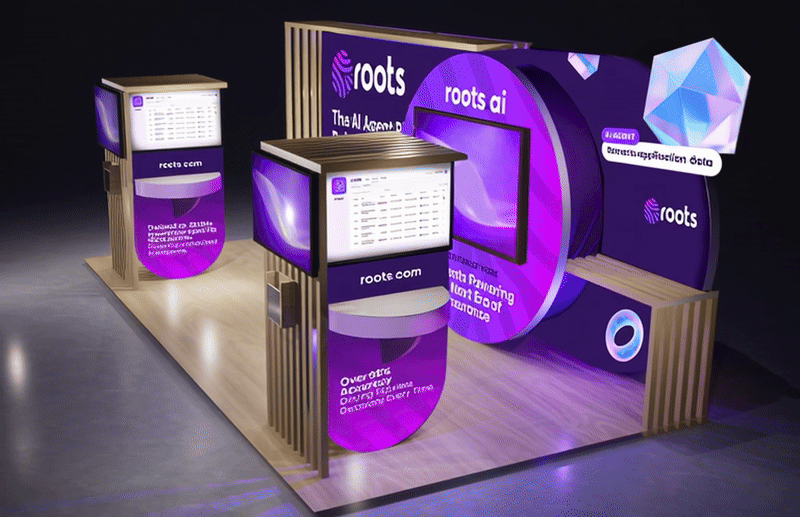Design Warfare: How to Win the Battle for Bold Ideas in B2B
Creative direction isn’t about decorating—it’s about strategy. Every color, layout, and line of copy should be chosen with purpose, because in B2B design, every presentation can feel like a battlefield. The stakes are high, the audiences are analytical, and unconventional ideas often face resistance.
That’s why I walk into every review prepared for war—armed with purpose, proof, and passion.
Created with Midjourney v7
dark hair long hair woman designer with a laptop on a battle field carrying weapons and about to go to a boardroom to share their designs. The battle fields are colorful and playful
Weapon 1:
The “Why” Behind Every Design
You can’t win a design debate with pretty pixels—you win it with reasoning.
The best designers can explain not just what they made, but why they made it.
When I led the Roots AI rebrand, the challenge was to humanize a complex AI platform without losing its precision. The hexagon wasn’t a random geometric trend—it represented connection, scalability, and intelligence. That “why” became my shield during reviews. Every critique had an answer, every question had logic.
Tip for designers:
Walk into your next review ready to narrate your reasoning. Your concept isn’t just visual—it’s strategic.
Weapon 2:
Case Studies as Ammunition
In B2B, bold ideas often meet cautious stakeholders. That’s why I bring proof to the fight.
When pushing forward unconventional creative—like the “Venmonsters” campaign for Venminder—I backed it with examples of other high-performing, personality-driven campaigns from enterprise brands like Salesforce and its characters. Showing results from companies who had already dared to be different turned skepticism into curiosity.
If you’re trying something fresh, show how similar risks have worked elsewhere. It’s not defensive—it’s tactical.
Creative tip: Keep a “swipe file” of case studies and campaigns that broke norms. Bring them into the room when your idea needs backup.
Weapon 3:
Evolving the Brand System
Even the strongest brand system needs armor upgrades. At Roots AI, we evolved the identity to feel more human and premium without losing credibility. At Assembly, I helped brands like Klarna and LivexLive maintain a consistent voice while scaling across new platforms.
Modern brands must move with the market—otherwise, even the best logo or palette becomes a sitting duck.
Designer mindset: treat brand evolution as a strategic campaign, not a cosmetic update. Every evolution should answer: What battle is the brand fighting now?
Weapon 4:
AI as a Tactical Ally
AI isn’t the general—it’s your sidekick.
I use it to prototype faster, explore tone directions, or stress-test ideas—but never to replace intuition.
When I’m concepting for B2B campaigns, AI helps me visualize options quickly—then I choose what fits the mission. The tool accelerates production, but the designer defines vision.
AI Tip: Use AI to expand your battlefield—generate quick brand territories, iterate faster, and gather insights—but lead the creative charge yourself.
Winning the War Between Vision and Impact
Great creative leadership is about knowing when to push and when to optimize. Some moments call for bold, experimental design; others require restraint to hit business goals. Balancing the two is how you build trust—and win more creative battles over time.
Because in the end, design wars aren’t about ego. They’re about championing ideas that move brands forward—ideas worth fighting for.





